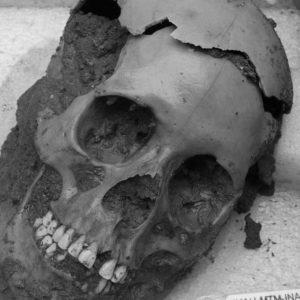Police found 150 skulls at a “crime scene” in Mexico. It seems the victims, largely girls, were ritually decapitated over 1,000 years ago.
Warning: Undefined variable $post_id in /home/webpages/lima-city/booktips/wordpress_de-2022-03-17-33f52d/wp-content/themes/fast-press/single.php on line 26

When Mexican police found a pile of about 150 skulls in a cave close to the Guatemalan border, they thought they were a criminal offense scene, and took the bones to the state capital.
It seems it was a really chilly case.
It took a decade of checks and evaluation to determine the skulls have been from sacrificial victims killed between A.D. 900 and 1200, the National Institute of Anthropology and Historical past said Wednesday.
A skull discovered at the archaeological web site Templo Mayor sits on display in Mexico City, Friday, Oct. 5, 2012. Alexandre Meneghini / AP"Believing they were looking at a crime scene, investigators collected the bones and began analyzing them in Tuxtla Gutierrez," the state capital, the institute, often called INAH, said in a statement.
The police in 2012 weren't being silly; the border area around the town of Frontera Comalapa in southern Chiapas state has lengthy been affected by violence and immigrant trafficking. And pre-Hispanic cranium piles in Mexico normally present a gap bashed through each side of every cranium, and had been often present in ceremonial plazas, not caves.
However consultants mentioned Wednesday the victims within the cave had most likely been ritually decapitated and the skulls put on show on a type of trophy rack often known as a "tzompantli." Spanish conquistadores wrote about seeing such racks in the 1520s, and some Spaniards' heads even wound up on them.
Whereas normally strung on wood poles utilizing holes bashed by means of them - the common practice among the many Aztecs and different cultures - experts say the cave skulls may have rested atop poles, reasonably than being strung on them.
Apparently, there have been extra females than males among the many victims, and none of them had any tooth.
In mild of the cave expertise, archaeologist Javier Montes de Paz said individuals should most likely name archaeologists, not police.
"When people find one thing that may very well be in an archaeological context, don't touch it and notify local authorities or immediately the INAH," he stated.
In 2015, archaeologists discovered the primary trophy rack of sacrificed human skulls at Mexico City's Templo Mayor Aztec destroy website.
That very same year, artifacts discovered on the Zultepec-Tecoaque wreck web site revealed proof from when tons of of individuals in a Spanish-led convoy had been captured, sacrificed and apparently eaten.
A 2016 examine found that in societies where social hierarchies have been taking form, ritual human sacrifices targeted poor folks, serving to the powerful management the decrease lessons and preserve them of their place.
Trending News